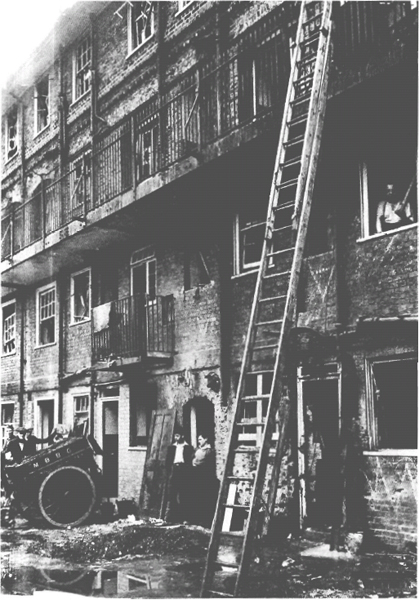
1. Blitz damage to Whitman House on the Cornwall Estate, Bethnal Green. Note the people still inside the probably dangerous building, and the municipal handcart on the left.

1. Blitz damage to Whitman House on the Cornwall Estate, Bethnal Green. Note the people still inside the probably dangerous building, and the municipal handcart on the left.
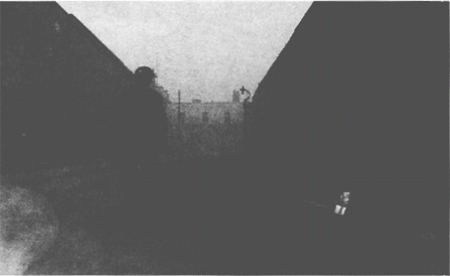
2. ARP Warden King, accompanied by Rip, begins his nightly duties along Southill Street during a London peasouper. Rip was adopted by Mr King’s wardens’ post, and was the first dog to help find people trapped by the bombing. He was awarded the Blue Cross Medal, known as ‘the animals’ VC’.
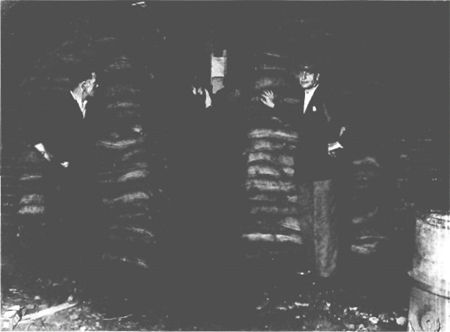
3. The railway arches, Arnold Road, Bow, showing the sandbagged entrance to the shelter belonging to J. O’Connor, the cooper and barrel merchants.
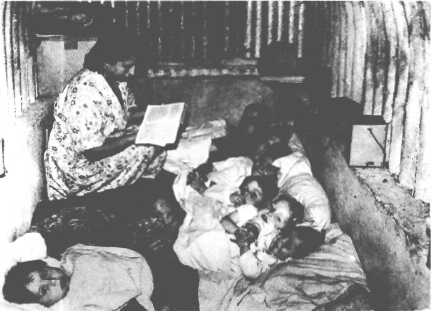
4. Bedtime stories in the shelter. The gas masks are stored on the ledge on the right, and Mum has little space to stretch out for the night.
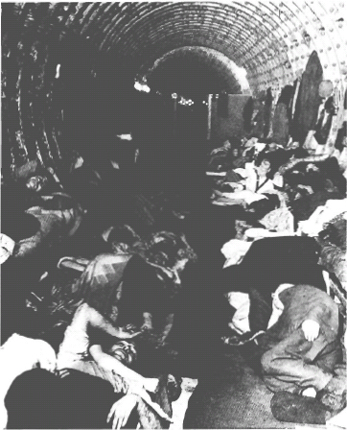
5. East Enders experience nightly overcrowding and lack of privacy as they shelter – in this case in an uncompleted section of the London Underground.
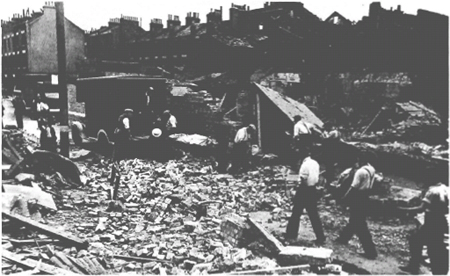
6. Devastation in Poplar. ARP workers and wardens attached to Post B132 have the morbid task of digging out the victims of a parachute mine.
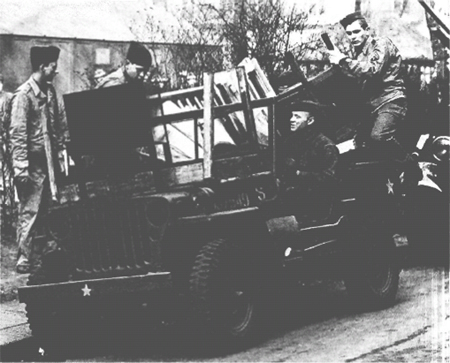
7. GIs lend Londoners a hand to clear up after a raid. On this occasion at least some of the furniture has been saved.
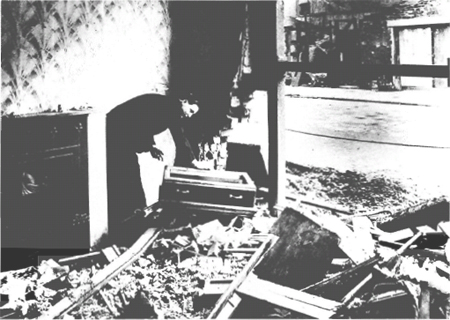
8. Searching through the debris of a house in Cyprus Street, Old Ford, to see if there is anything left that might be rescued.
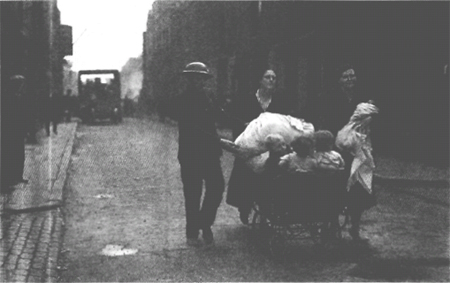
9. This picture of September 1940 shows an ARP warden helping East End mothers and their babies, made homeless by the bombing, move to a place of greater safety. It was passed by the censor as suitable for publication, presumably because it reassured the public that people could survive the terrible raids.
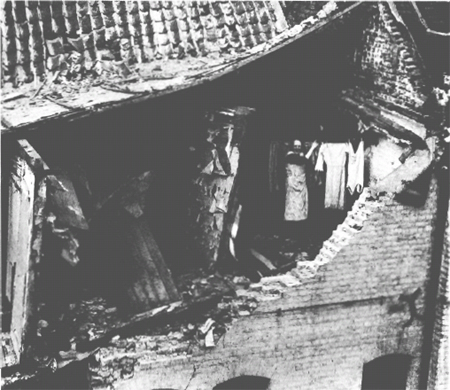
11.
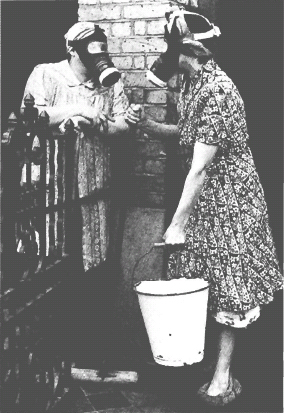
12.
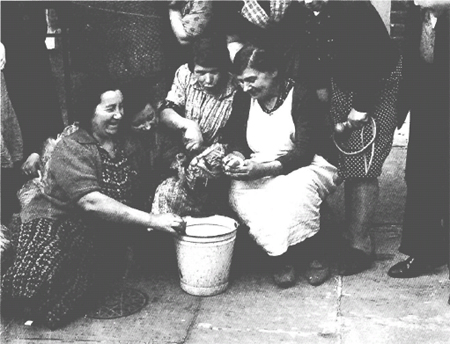
13.
10–13. With the war lasting for six long years, ordinary domestic life, with its cooking and cleaning, still had to go on in our street, regardless of the extraordinary circumstances.
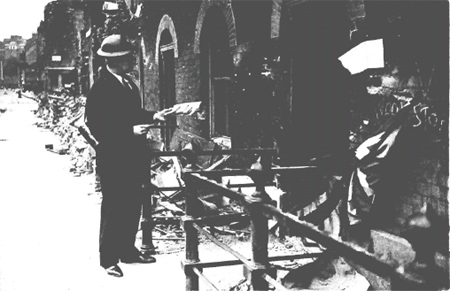
14. It wasn’t only domestic work that needed doing; here the postman does his best to deliver the mail.
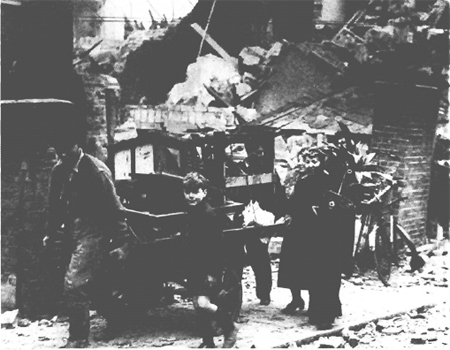
15. Sadly, this family have nowhere left to receive their letters. All that remains of their home is piled up on the handcart.
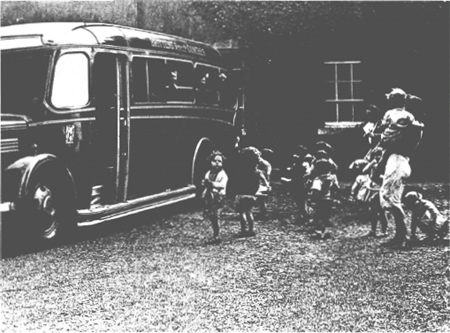
18. Little ones evacuated from Columbia Market Nursery to Alwalton Hall, near Peterborough, wave goodbye to their parents. Some children would not return home for years.
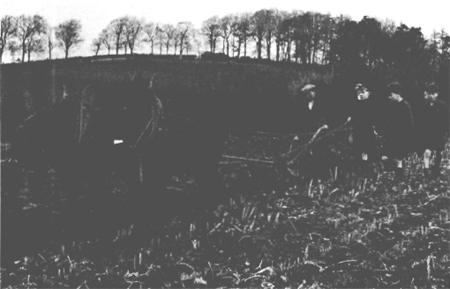
19. Older London lads, evacuated to Devon, being taught how to plough. The replacement of horses by motorized vehicles was, in many cases, halted by the war.
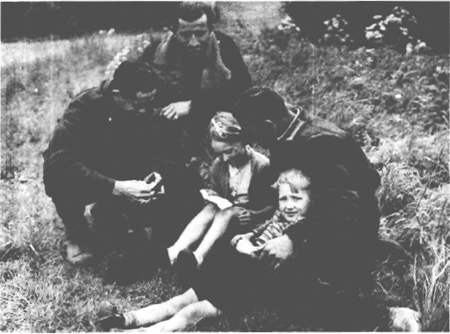
20. A long way from home – London evacuees and Italian prisoners of war. The POWs were being used as farm labourers in the West Country.
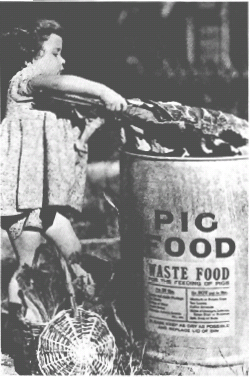
21. Waste not want not – a young Londone ‘doing her bit’ by adding scraps to the pig bin, which would be sent off to the local pig club or municipal piggery.
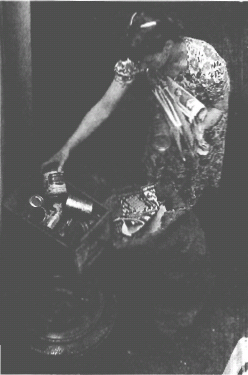
22. A housewife ‘doing her bit’ by sorting tin and paper for salvage.
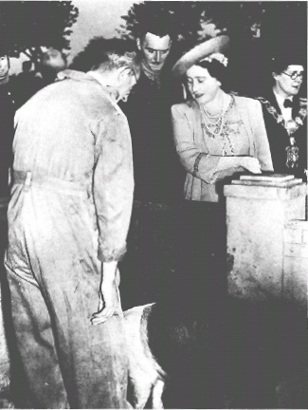
23. Queen Elizabeth pays a visit to the Sewardstone Road piggery in June 1943.
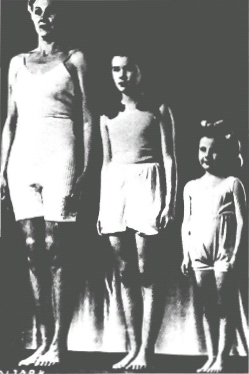
24. Models demonstrating the new Utility underwear. These standardized garments came in limited styles, but were well designed and affordable, and made from good-quality materials approved by the Board of Trade.
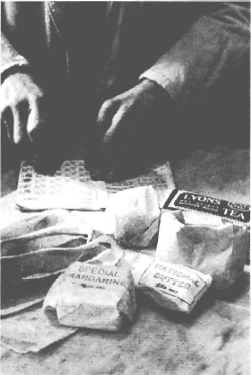
25. Cancelling the coupons for a customer’s weekly ration, comprising tea, sugar, butter, cooking fat, bacon and the somewhat alarming-sounding ‘special margarine’.
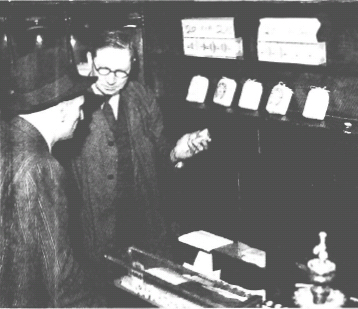
26. Even though goods such as tobacco, cigarettes and especially matches were not rationed, they were still hard to come by, although this shopkeeper could offer twenty Roys for half a crown.
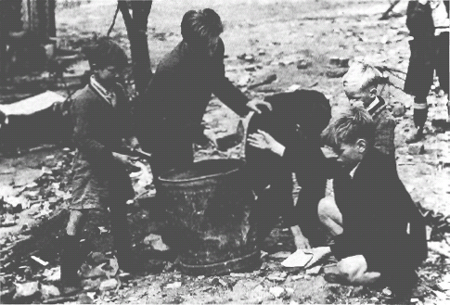
27. Children in Russia Lane, Bethnal Green, clearing a bomb site to create allotments for growing vegetables.
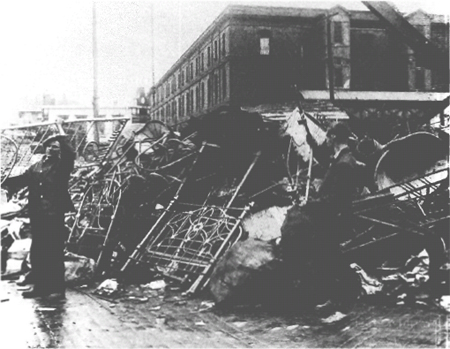
28. Part of the astonishing 100 tons of scrap collected at Northumberland Wharf in Poplar after the mayor made an appeal for salvage in July 1940.
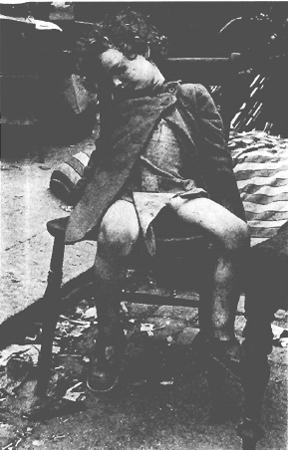
29. Exhausted and dirty but safe, a childhood victim of war is given what limited comfort is available.
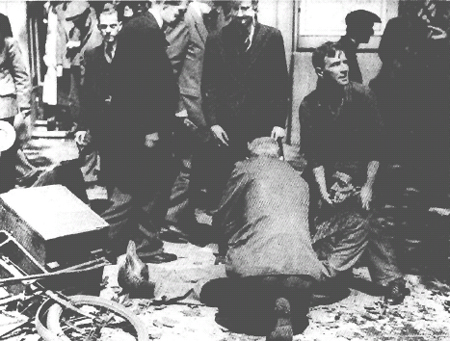
30. An adult casualty being tended until medical help arrives.
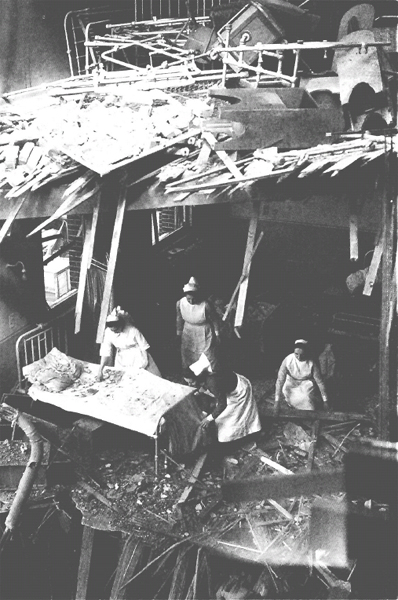
31. The medical professionals themselves weren’t immune. Here, nurses at St Peter’s, Stepney – one of four London hospitals bombed in a single night in April 1941 – recover what they can from the debris.
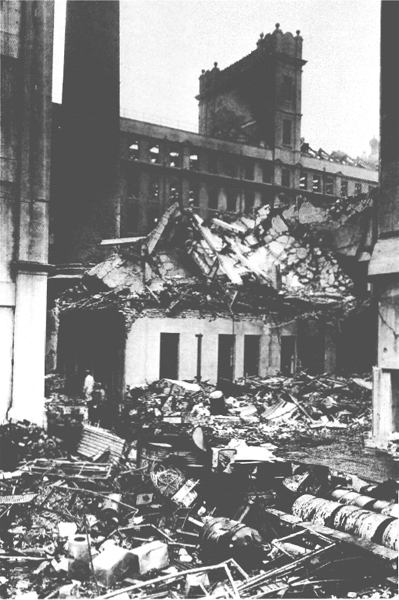
32. Damage to Spiller’s Flour Mills, Royal Victoria Dock, following the first mass daylight raid on London on 7 September 1940. Spiller’s was part of the largest complex of grain mills outside Canada.
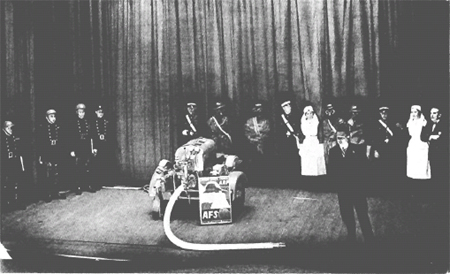
33. A 1939 appeal for civil defence volunteers from the stage of the ‘Ipp’ – the Poplar Hippodrome, East India Dock Road.
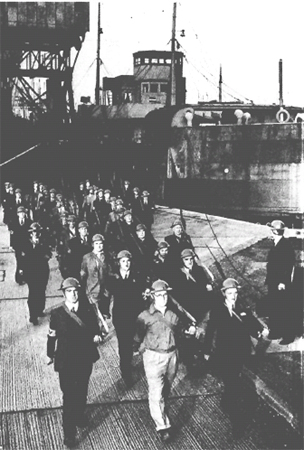
34. Protecting the docks, November 1941. A detachment of the Port of London’s Home Guard, originally known as Local Defence Volunteers, march with fixed bayonets.
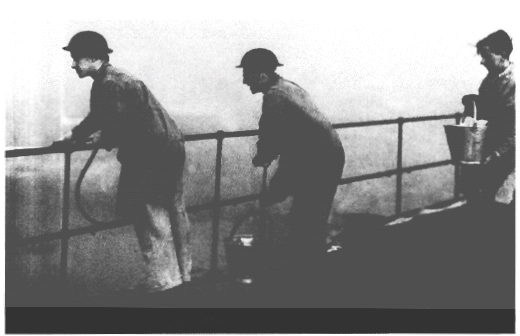
35. Tin hats, buckets and stirrup pumps were the somewhat limited tools and protection used by fire watchers such as these men on duty on the roof of the Troxy Cinema, Commercial Road.
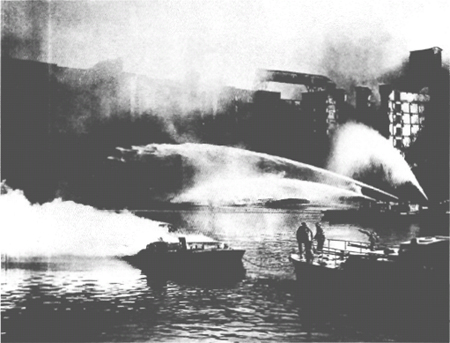
36. The London Fire Brigade battles with blazing warehouses in the Eastern Basin, St Katharine Dock, 8 September 1940.
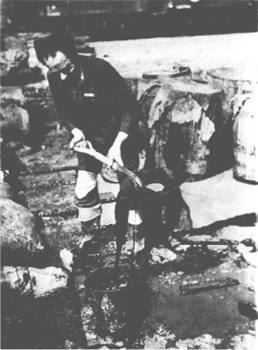
37. Salvaging what was left of the tens of thousands of tons of sugar that went up in flames in the West India Dock, 8 September 1940. With little confectionery available, the resulting ‘toffee’ was collected – by some daring individuals – as a sweet treat.
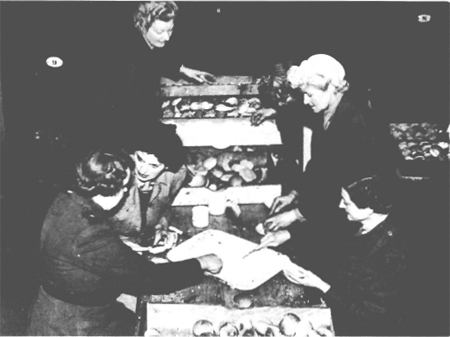
38. Members of the Women’s Legion preparing cheese rolls for London dockers. The Legion operated mobile canteens, distributing drinks and snacks throughout the docks, so that the men could be sustained without unnecessary interruption to their vital handling of cargo.
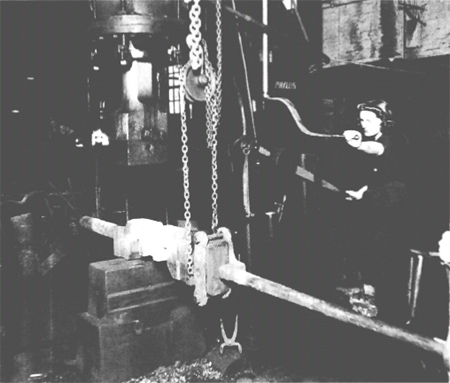
40.
39–40. Enjoying their work – women showing off newly found skills on the railways and the factory floor. Note Phyllis’s boiler suit and her patriotic ‘Victory Roll’ hairstyle. Like the railway ladies’ berets, it kept her hair safely tucked away from any machinery.
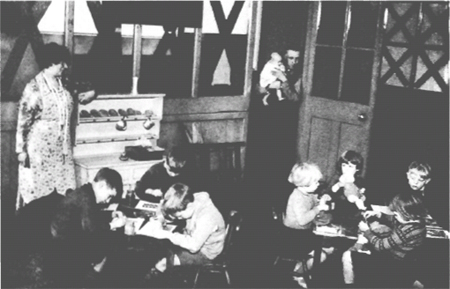
41. Taking care of homeless East End youngsters. The gummed paper on the windows was to prevent the glass shattering in the event of a blast.
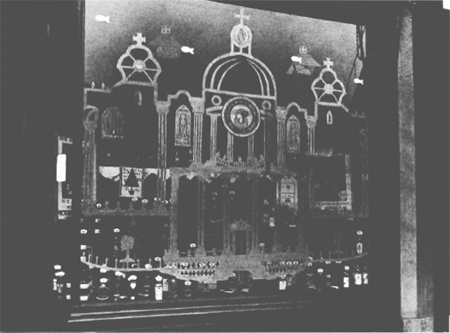
42. A rather more elaborate use of gummed paper to protect the window of the Victoria Wine Company in East India Dock Road, the scene even including four miniature, paper barrage balloons.
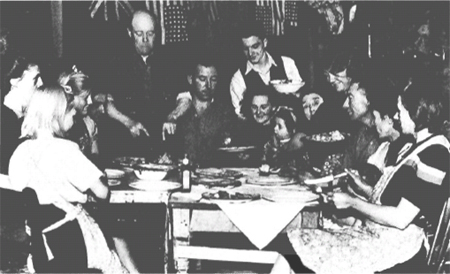
43. These London families settle down to enjoy their Sunday dinner, despite being in the lean-to shelter at the back of their houses where they were forced to live after their homes were blitzed.
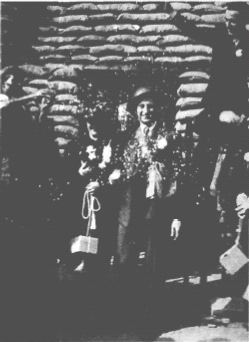
44. And these Londoners enjoy their special day, despite the sandbags, tin helmets and gas masks, and the lack of a traditional wedding gown.
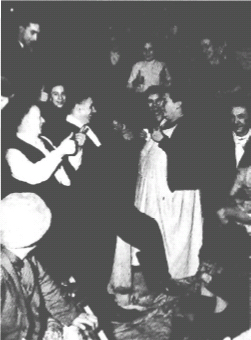
45. Even ‘down the shelter’ – in this case a section of uncompleted Underground line between Liverpool Street and Bethnal Green – Londoners could still enjoy a knees-up.
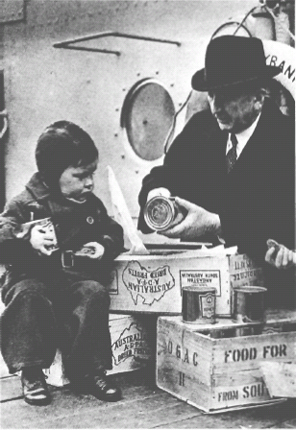
46. King George V Dock, March 1946. The war is over and young Peter Stewart, wearing his siren suit despite the air-raid warnings having long been silenced, is somewhat dubious as he inspects tins of honey and dried fruits. The goods were sent from Australia aboard the SS Moraybank.
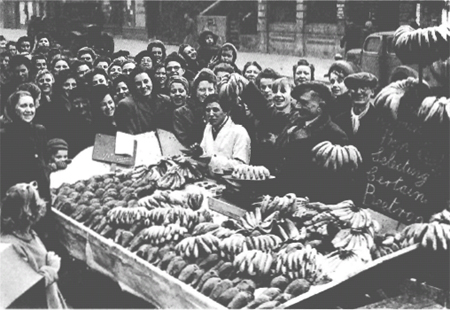
47. It’s 1946, and yes, we have some bananas! A stall in Bethnal Green proudly displays the much-missed fruit and also has beetroot for sale at 5d a pound. But it would be a few years yet before there was enough of everything – from meat to housing – to go round …